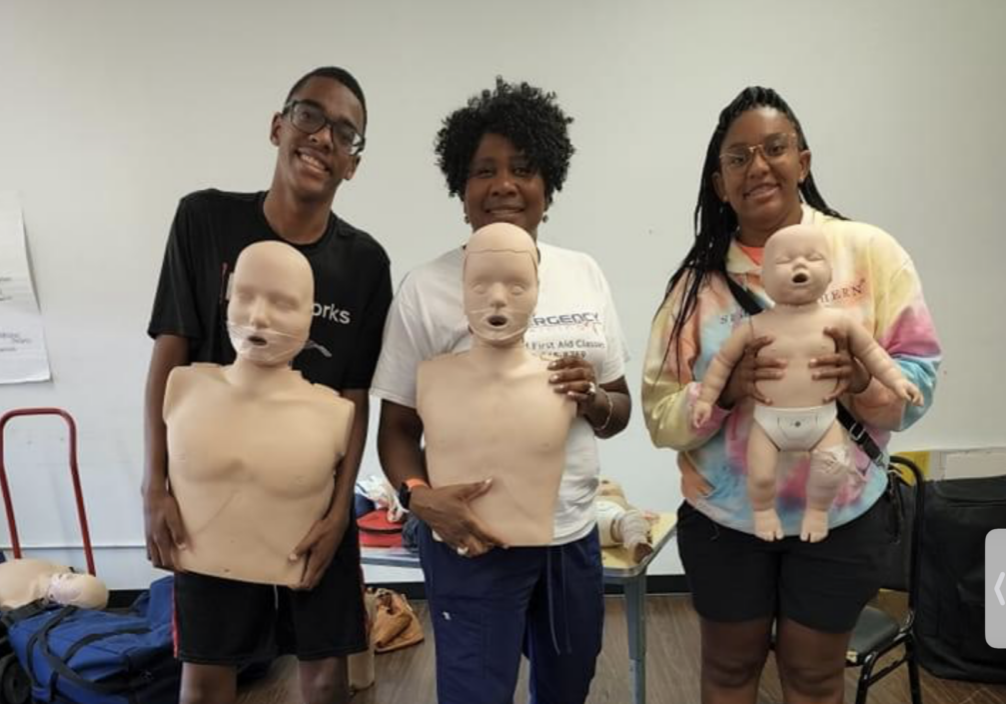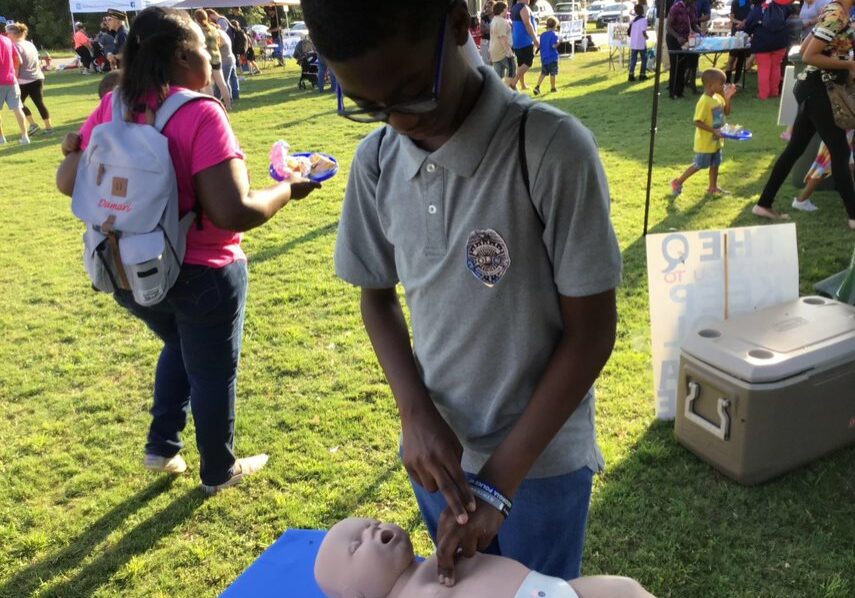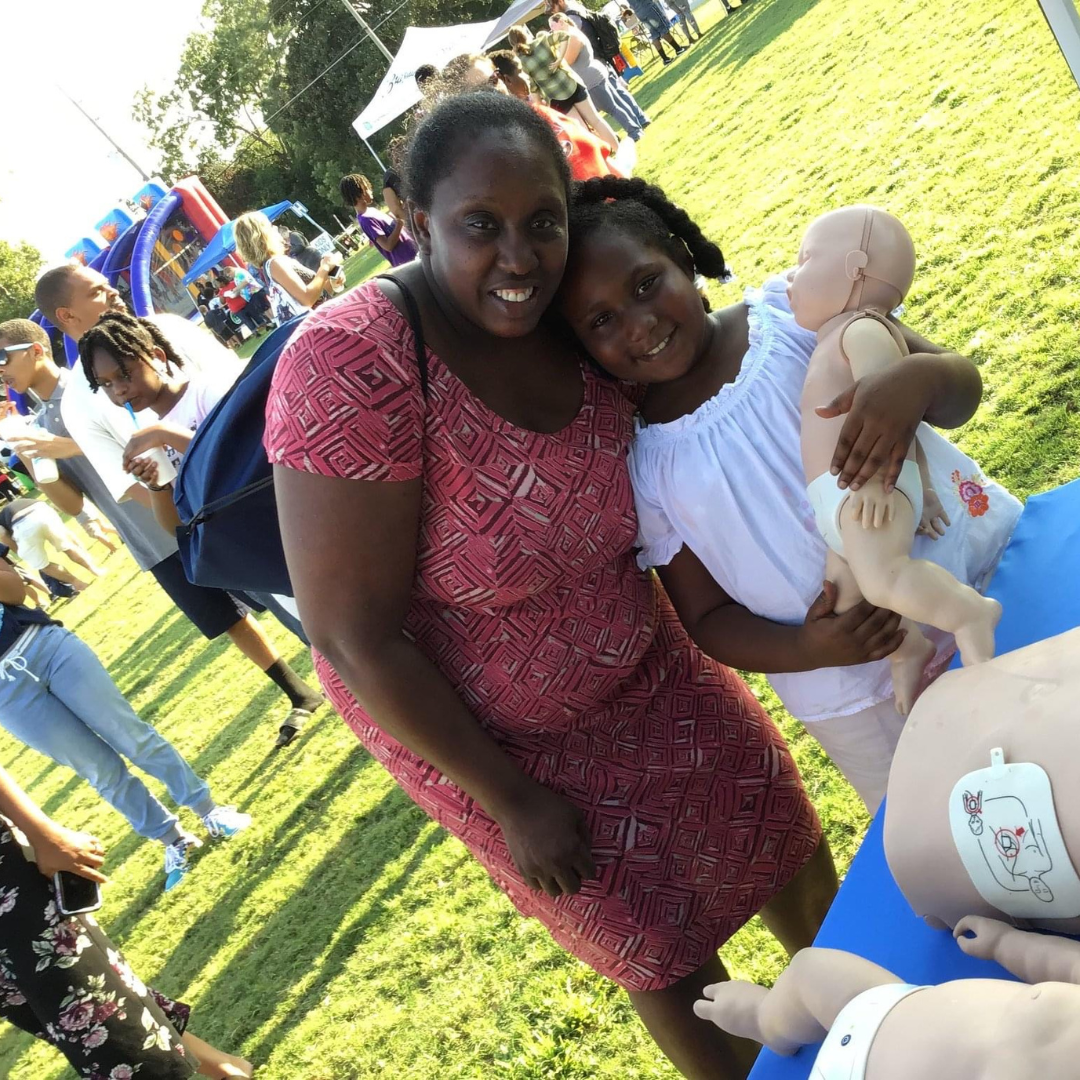
Our Story
CEO and Founder of Community Emergency Training, Inc., Felicia Willis-Washington, has been teaching CPR and first aid for about 10 years. During this time, she learned some disturbing and shocking information: Racism plays a role in non-bystander CPR. This is when someone with the skills and knowledge to help is actively on the scene of an emergency, but they make the decision to not help save a life because of racism and other biases.

CPR and First Aid Statistics
- About 350,000 people (half the population of Vermont) experience Sudden Cardiac Arrests (SCA) outside of a hospital setting each year in the U.S. and most occur at home.
- Approximately 92% of people who experience an Out of Hospital Cardiac Arrest (OHCA) event die.
- Only 8% of those who experience an OHCA survive, which means out of 350,000 people that have an OHCA only 28,000 survive and 322,000 die.
A major factor of the deaths is a lack of bystander Cardiopulmonary Resuscitation (CPR) due to racism (CDC, AHA). Katie Dainty, research chair at North York General Hospital and an associate professor in the Institute of Health Policy, Management and Evaluation at the University of Toronto in Canada, maintains that racism is definitely one of the factors preventing people from responding to Black and Hispanic adults in need of help.
Disparities Identified in BIPOC (Black, Indigenous, People of Color)
- White people are significantly more likely to receive CPR than Black people, Hispanic people, or members of other racial/ethnic groups.
- Hispanic adults who experience a witnessed Sudden Cardiac Arrest (SCA) outside the hospital are substantially less likely than their White peers to receive lifesaving care from bystanders.
- Black and Hispanic adults whose hearts stopped at home were 26% less likely to receive bystander CPR than White people.
- Black and Hispanic adults who had a cardiac arrest in the workplace were 27% less likely to receive CPR from a bystander than their White co-workers.
- Black and Hispanic adults with cardiac arrest in public were 41% less likely to receive bystander CPR.
- When Black and Hispanic people experienced a cardiac arrest at a public transportation center, they were 57% less likely to receive bystander CPR.
- As compared to White children, bystander CPR was 41% less likely for Black kids, 22% less likely for Hispanic kids, and 6% less likely for other ethnic groups.
- Black children who live in mostly Black neighborhoods with high unemployment, low education, and low median income were almost half as likely to receive bystander CPR compared to White children – 32.1% compared to 59.7%.


Bringing Education and Awareness to BIPOC Communities
By going into lower-educated, underserved BIPOC communities, we will:
- Increase the percentage of bystander CPR and first aid response.
- Decrease the mortality rate of SCA in these communities and increase the chances of survival.
- Enable young people and adults from the communities we serve to become certified by the AHA in CPR and other lifesaving skills, which they can then use to secure employment or make themselves more marketable to employers.



